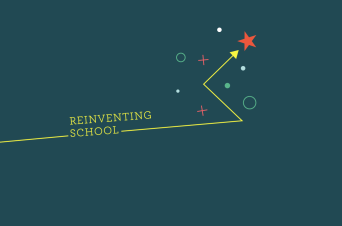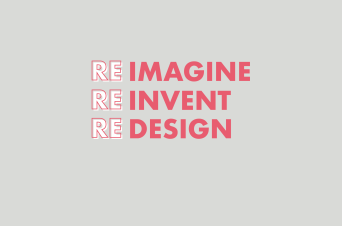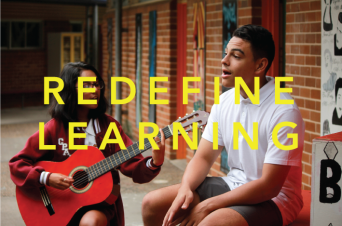
Flogging Dead Horses – Making the case for new school designs
blog | Words Martin James | 31 Oct 2017
A building revolution is taking place across Australia. State governments and education systems are commissioning new school builds in response to population growth and the changing demographics of both regions and metropolitan areas across their jurisdictions.
In New South Wales there will be 120 new school builds or upgrades over the next four years at a cost of $4.2 billion. New South Wales is not alone. Victoria, through its public private partnerships, will see 15 new school builds being delivered between 2017-2019. In Queensland, there will be two new secondary schools built in Brisbane, the first since 1963, as part of a $500 million funding boost that will see a further four secondary schools built in other growth areas across the state. Western Australia is also responding to its growing southern corridor, building four new primary schools last year, another four this year, and six secondary schools over the coming three years.
This investment in new schools is a once in a lifetime opportunity for innovation, both for many of those who lead schools as well as those who work in education systems supporting them. While the system, in highlighting these builds, pays reference to the physical design and state of the art facilities, we are left uncertain about what this should mean in practice. Will what is being created use best knowledge from around the world about teaching, learning and kids? Will the process produce something new, different and future-focused?Is sufficient thought going into how to engage students fully in the design process? Is enough being said about the need for new school designs that prepare all students well for the world they will enter?
Our model of schooling is more than 100 years old and has barely changed in that time, while the rest of society – our industrial practices, technology, the media we use, our leisure activities, the global scope of our world, communication systems – has undergone a revolution.
There has been a similar revolution of opportunities for and modalities of adult education. Since the 1960s, the Open University (OU) has demonstrated that virtually every adult is capable of degree level study, given the right modalities of learning and modes of assessment. More than three million people, most failed by their schooling, have passed OU degrees.
The original purpose of school – designed to sort and sift; to separate sheep and goats – is now redundant. We need 100% of students to be skilled and capable citizens able to contribute positively to both their economic and social world.
While we have made moves in the right direction, we are to a certain extent still flogging the dead horse of the out of date school model, when it is patently incapable of responding to the challenges young learners will face in their future. We only need to look at the effects of the uberisation of the workforce in recent years as an example of how the current schooling model is failing to respond to the world our young people will enter.
So what is wrong with this particular dead horse? How much time do you have?
The worst of it is that there are some arguably redundant, or even debilitating features that just don’t get questioned. So let’s ask ourselves just 10 questions.
- Why do we still have age-cohorting? It certainly isn’t because we believe that all students mature and progress at the same rates. Watch rehearsals for a school production or a concert if you wonder about mixed-age learning.
- Why have we retained so exclusively the subject-based curriculum, when no tasks in the real world segregate knowledge or its applications in that way?
- Why are schools designed into corridors and classroom spaces – such that it makes teaching the most isolated and un-stimulating professional practice?
- Why do we assess all students at the same time, rather when they are ready to demonstrate mastery (think music grades, or driving test, or sports coaching awards, or Open University modules, or PhD dissertations)?
- Why do schools set homework, when they already have students in school for 25-30 hours a week – and when the world outside school is rich in opportunities for self-initiated learning?
- Why do most schools have 25 one-hour lessons – when nobody believes that it is a unit that is enabling of deep or applied learning?
- Why is the assessment outcome that matters still an exam written on pen and paper and marked by anonymous paid markers – when teachers know students and their capabilities from five years of engagement with them?
- Does speaking matter? Do so-called hard skills matter? Do so-called soft skills? Does making and doing matter? If so, why are none of these things given high currency?
- Why do we persist with the corrosive language and practice of ‘ability’ groupings. Schools are the only places where it is deemed appropriate to name people ‘low ability or ‘less able’.
- Finally, a contentious one. Given that schools are centres of learning, why are the adult learning norms and practices in most of our school so abysmally poor?
Of course, a few of these questions may confront expectations. There may be some that seem outrageous. However, there is a simple truth that confronts our model of schooling. We know that capability is multifaceted and that human potential is such that virtually all adults are capable of high-level learning and complex task accomplishment. We also know that the existing model of school has consistently failed to enable all students to be successful, or to close the equity gap between those from advantaged backgrounds and those who are not.
And it isn’t the fault of the students (many of whom go on in adulthood to achieve remarkably beyond their schools’ predictions). It is the fault of the model of schooling – and no amount of external school review, or examination rigour, or teacher performance management can make a model that is out-of-date fit for our times.
It is flogging a dead horse.
So, what seems to be desperately needed in our education systems is an innovation strategy that will encourage the design and establishment of some new school models. Whilst we can highlight and point to some great pockets of innovation across these systems, as individual schools and select cohorts work to create new models, processes and practices, it is not sufficiently systemic in its approach, nor sufficiently strategic nor connected nor intentionally amplified to have impact at scale. We need 100% of students to be skilled, capable citizens. The opportunity is now and it should not be missed.
Australia has the opportunity to utilise this swathe of new builds to generate a fleet of extraordinary, exemplar schools on behalf of the entire system – much as has begun to happen in other countries. These school builds, expansions and remodels create the perfect conditions for new models of schooling and learning to be developed, prototyped, evidenced and embedded.
Find out more about working with our School Design Lab.
Thank you to David Jackson for allowing us to reproduce this blog.

How do we reinvent school for the modern world?
The thriving societies of tomorrow need thriving young people today: children and young adults who want and are able to positively shape the world around them.
20 Apr 17

School Design Lab
School Design Lab brings a practical, holistic approach to the challenge of school design, backed up by a wealth of experience and insight from across the world.
01 Nov 17

Engaging in work that matters
In the first of two posts, Stacey Quince, Principal at Campbelltown Performing Arts High School, reflects on the journey her school is taking to transform the purpose and nature of learning.
18 Jul 17